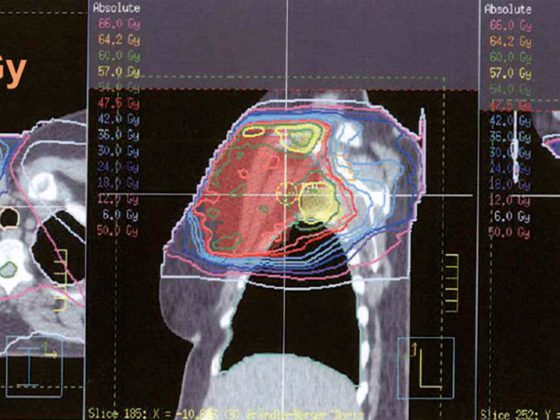How are patients with low-grade early follicular lymphoma treated nowadays and what developments have there been in this regard in recent years? A U.S. retrospective cohort study shows that radiotherapy in particular is used too infrequently, even though it prolongs survival.
In total, they collected data from 35,961patients who received a diagnosis of low-grade early follicular lymphoma between 1998 and 2012. The majority of those affected (61%) were over 60 years of age at the time of diagnosis, and 79% showed no extranodal involvement. 63% of the lymphomas were stage I (patients with lymphomas stage III and above were excluded).
Although international guidelines recommend radiotherapy as the preferred initial therapy, this treatment modality was used less and less frequently during the observation period. In 1999, the rate was 37%; a good 13 years later, in 2012, it was 24%. This decrease was significant, as was the increase in observational strategies and monochemotherapies, which were increasingly used in parallel. This is astonishing, because the study also showed that patients with radiotherapy lived significantly longer than patients without: In the group with radiotherapy, the survival rate was 86% after five years and 68% after ten years, while in the other patients it was only 74% and 68%, respectively. 54% (p<0.0001).
In multivariable analysis, the use of radiotherapy as initial treatment also remained independently associated with improved overall survival. Specifically, the risk of mortality was reduced by a significant 46% (HR 0.54; 95-KI 0.47-0.63, p<0.0001).
Follow guidelines
The authors conclude that radiotherapy is increasingly neglected as a treatment approach in patients with early-stage follicular lymphoma, although it significantly prolongs survival. Contrary to the current trend, they therefore recommend maintaining radiation as the standard method and following the guidelines more closely in this regard.
Source: Vargo JA, et al: What is the optimal management of early-stage low-grade follicular lymphoma in the modern era? Cancer 2015; doi: 10.1002/cncr.29491 (Epub ahead of print).











